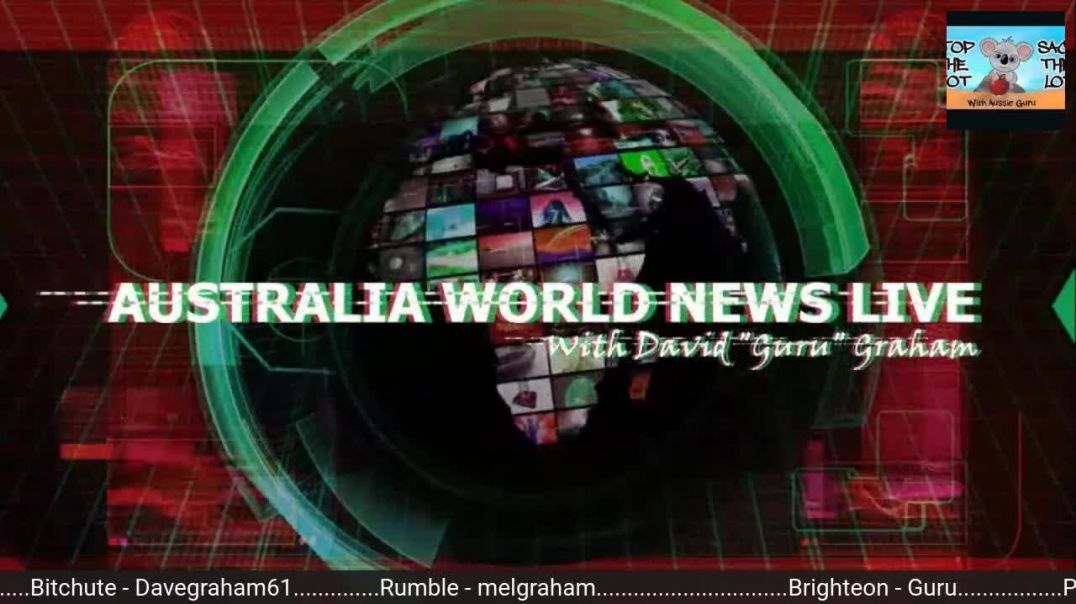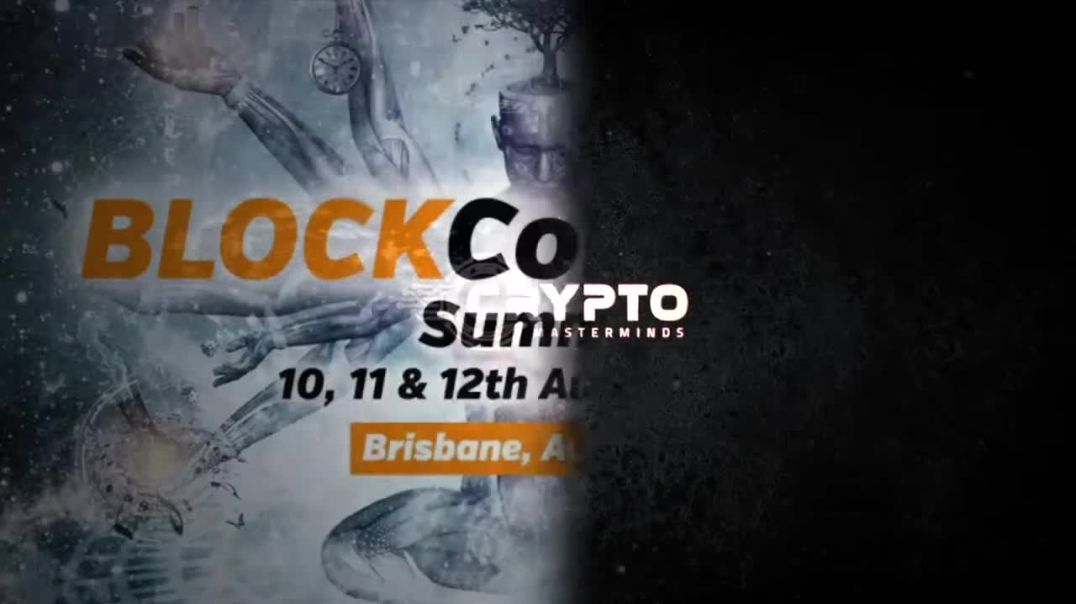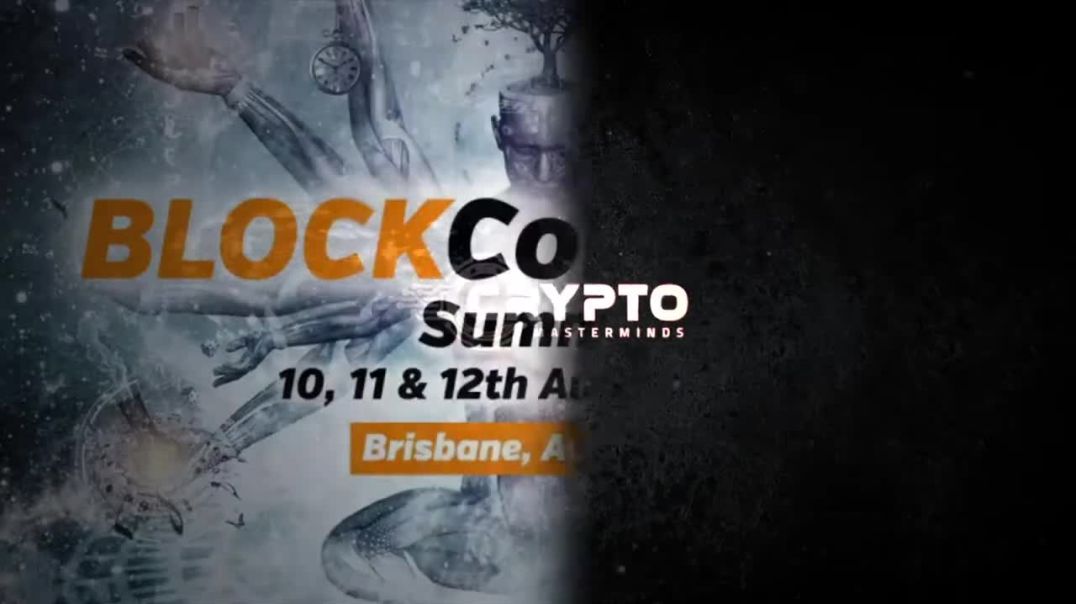Top videos
‘Brisbane political activist Drew Pavlou was removed from Centre Court at Wimbledon by security officials’.
Watch 'Alan Jones' 8pm Monday to Thursday on ADH TV: https://watch.adh.tv/browse
____________________
📖 Read more from ADH TV here: https://adh.tv/
💬 Join in the conversation in the comments.
👍 Like this video if you enjoyed it and want to see more, it really helps us out
🔔 Subscribe to our channel and click the bell to watch our videos first
⏲️ Missed this episode live? Subscribe to ADH TV to be up to date with all our events:
https://watch.adh.tv/checkout/subscribe/signup
🎤 Have your say and contact Alan Jones on alanjones@adh.tv
____________________
Australia's Leading Voice. News and analysis from experienced broadcasters with insightful interviews. Join the debate on the future direction of the country.
Check out ADH TV at - https://adh.tv
Subscribe to the ADH TV mailing list- https://adh.tv/subscribe/
Join ADH TV as a member for free at - https://watch.adh.tv/checkout/subscribe/signup
Follow ADH TV on Socials
Twitter: https://twitter.com/adhtvaus Facebook: http://facebook.com/adhtvaus Instagram: http://instagram.com/adh_tv Spotify: https://open.spotify.com/show/....44ISFXCYFB6zbvOTAjok
The scandal-ridden Boris Johnson is under fire from backbenchers says Political Editor of Daily Express David Maddox.
Watch 'Alan Jones' 8pm Monday to Thursday on ADH TV: https://watch.adh.tv/browse
____________________
📖 Read more from ADH TV here: https://adh.tv/
💬 Join in the conversation in the comments.
👍 Like this video if you enjoyed it and want to see more, it really helps us out
🔔 Subscribe to our channel and click the bell to watch our videos first
⏲️ Missed this episode live? Subscribe to ADH TV to be up to date with all our events:
https://watch.adh.tv/checkout/subscribe/signup
🎤 Have your say and contact Alan Jones on alanjones@adh.tv
____________________
Australia's Leading Voice. News and analysis from experienced broadcasters with insightful interviews. Join the debate on the future direction of the country.
Check out ADH TV at - https://adh.tv
Subscribe to the ADH TV mailing list- https://adh.tv/subscribe/
Join ADH TV as a member for free at - https://watch.adh.tv/checkout/subscribe/signup
Follow ADH TV on Socials
Twitter: https://twitter.com/adhtvaus Facebook: http://facebook.com/adhtvaus Instagram: http://instagram.com/adh_tv Spotify: https://open.spotify.com/show/....44ISFXCYFB6zbvOTAjok
Alan Jones calls for an independent review into the Reserve Bank of Australia after their monetary policy failure.
Watch 'Alan Jones' 8pm Monday to Thursday on ADH TV: https://watch.adh.tv/browse
____________________
📖 Read more from ADH TV here: https://adh.tv/
💬 Join in the conversation in the comments.
👍 Like this video if you enjoyed it and want to see more, it really helps us out
🔔 Subscribe to our channel and click the bell to watch our videos first
⏲️ Missed this episode live? Subscribe to ADH TV to be up to date with all our events:
https://watch.adh.tv/checkout/subscribe/signup
🎤 Have your say and contact Alan Jones on alanjones@adh.tv
____________________
Australia's Leading Voice. News and analysis from experienced broadcasters with insightful interviews. Join the debate on the future direction of the country.
Check out ADH TV at - https://adh.tv
Subscribe to the ADH TV mailing list- https://adh.tv/subscribe/
Join ADH TV as a member for free at - https://watch.adh.tv/checkout/subscribe/signup
Follow ADH TV on Socials
Twitter: https://twitter.com/adhtvaus Facebook: http://facebook.com/adhtvaus Instagram: http://instagram.com/adh_tv Spotify: https://open.spotify.com/show/....44ISFXCYFB6zbvOTAjok
Live chat with Guru, Cazz and Mark Mack
‘Big business and big government are leading the way to Australia’s economic demise’.
Alan Jones blames woke politicians and corporations for demonising fossil fuels which have led to an energy crisis.
Watch 'Alan Jones' 8pm Monday to Thursday on ADH TV: https://watch.adh.tv/browse
____________________
📖 Read more from ADH TV here: https://adh.tv/
💬 Join in the conversation in the comments.
👍 Like this video if you enjoyed it and want to see more, it really helps us out
🔔 Subscribe to our channel and click the bell to watch our videos first
⏲️ Missed this episode live? Subscribe to ADH TV to be up to date with all our events:
https://watch.adh.tv/checkout/subscribe/signup
🎤 Have your say and contact Alan Jones on alanjones@adh.tv
____________________
Australia's Leading Voice. News and analysis from experienced broadcasters with insightful interviews. Join the debate on the future direction of the country.
Check out ADH TV at - https://adh.tv
Subscribe to the ADH TV mailing list- https://adh.tv/subscribe/
Join ADH TV as a member for free at - https://watch.adh.tv/checkout/subscribe/signup
Follow ADH TV on Socials
Twitter: https://twitter.com/adhtvaus Facebook: http://facebook.com/adhtvaus Instagram: http://instagram.com/adh_tv Spotify: https://open.spotify.com/show/....44ISFXCYFB6zbvOTAjok
‘This crisis was always going to happen’.
Daniel Wild from the Institute of Public Affairs discusses Australia’s energy crisis amid blackouts on the east coast.
Watch 'Alan Jones' 8pm Monday to Thursday on ADH TV: https://watch.adh.tv/browse
____________________
📖 Read more from ADH TV here: https://adh.tv/
💬 Join in the conversation in the comments.
👍 Like this video if you enjoyed it and want to see more, it really helps us out
🔔 Subscribe to our channel and click the bell to watch our videos first
⏲️ Missed this episode live? Subscribe to ADH TV to be up to date with all our events:
https://watch.adh.tv/checkout/subscribe/signup
🎤 Have your say and contact Alan Jones on alanjones@adh.tv
____________________
Australia's Leading Voice. News and analysis from experienced broadcasters with insightful interviews. Join the debate on the future direction of the country.
Check out ADH TV at - https://adh.tv
Subscribe to the ADH TV mailing list- https://adh.tv/subscribe/
Join ADH TV as a member for free at - https://watch.adh.tv/checkout/subscribe/signup
Follow ADH TV on Socials
Twitter: https://twitter.com/adhtvaus Facebook: http://facebook.com/adhtvaus Instagram: http://instagram.com/adh_tv Spotify: https://open.spotify.com/show/....44ISFXCYFB6zbvOTAjok
ABOUT ADH TV
ADH TV is an online channel for promoting reasoned thinking, common sense politics, and considered debate. Watch ADH Broadcaster Alan Jones on our channel here:
https://www.youtube.com/c/alanjones
Don’t forget to subscribe!
CHECK OUT OUR OTHER VIDEOS
https://www.youtube.com/watch?v=2gXxqgbGH9g
https://www.youtube.com/watch?v=CgE8VD7-D-Q
https://www.youtube.com/watch?v=7JotVOq5NYA&t=1s
FIND US AT
https://adh.tv/
HAVE YOUR SAY
Contact Alan on alanjones@adh.tv.
FOLLOW US ON SOCIAL
Get updates or reach out to Get updates on our Social Media Profiles!
Twitter: https://twitter.com/adhtvaus
Facebook: http://facebook.com/adhtvaus
Instagram: http://instagram.com/adh_tv
Spotify: https://open.spotify.com/show/....44ISFXCYFB6zbvOTAjok
ABOUT ADH TV
ADH TV is an online channel for promoting reasoned thinking, common sense politics, and considered debate. Watch ADH Broadcaster Alan Jones on our channel here:
https://www.youtube.com/c/alanjones
Don’t forget to subscribe!
CHECK OUT OUR OTHER VIDEOS
https://www.youtube.com/watch?v=2gXxqgbGH9g
https://www.youtube.com/watch?v=CgE8VD7-D-Q
https://www.youtube.com/watch?v=7JotVOq5NYA&t=1s
FIND US AT
https://adh.tv/
HAVE YOUR SAY
Contact Alan on alanjones@adh.tv.
FOLLOW US ON SOCIAL
Get updates or reach out to Get updates on our Social Media Profiles!
Twitter: https://twitter.com/adhtvaus
Facebook: http://facebook.com/adhtvaus
Instagram: http://instagram.com/adh_tv
Spotify: https://open.spotify.com/show/....44ISFXCYFB6zbvOTAjok
ABOUT ADH TV
ADH TV is an online channel for promoting reasoned thinking, common sense politics, and considered debate. Watch ADH Broadcaster Alan Jones on our channel here:
https://www.youtube.com/c/alanjones
Don’t forget to subscribe!
CHECK OUT OUR OTHER VIDEOS
https://www.youtube.com/watch?v=2gXxqgbGH9g
https://www.youtube.com/watch?v=CgE8VD7-D-Q
https://www.youtube.com/watch?v=7JotVOq5NYA&t=1s
FIND US AT
https://adh.tv/
HAVE YOUR SAY
Contact Alan on alanjones@adh.tv.
FOLLOW US ON SOCIAL
Get updates or reach out to Get updates on our Social Media Profiles!
Twitter: https://twitter.com/adhtvaus
Facebook: http://facebook.com/adhtvaus
Instagram: http://instagram.com/adh_tv
Spotify: https://open.spotify.com/show/....44ISFXCYFB6zbvOTAjok
‘We’re now closer to nuclear war than we ever were when Trump was threatening to attack Pyongyang and Moscow’.
ADH TV broadcaster Fred Pawle fills in for Alan Jones.
Stream 'Alan Jones' 8pm Monday to Thursday on ADH TV: https://watch.adh.tv/browse
____________________
📖 Read more from ADH TV here: https://adh.tv/
💬 Join in the conversation in the comments.
👍 Like this video if you enjoyed it and want to see more, it really helps us out
🔔 Subscribe to our channel and click the bell to watch our videos first
⏲️ Missed this episode live? Subscribe to ADH TV to be up to date with all our events:
https://watch.adh.tv/checkout/subscribe/signup
🎤 Have your say and contact Alan Jones on alanjones@adh.tv
____________________
Australia's Leading Voice. News and analysis from experienced broadcasters with insightful interviews. Join the debate on the future direction of the country.
Check out ADH TV at - https://adh.tv
Subscribe to the ADH TV mailing list- https://adh.tv/subscribe/
Join ADH TV as a member for free at - https://watch.adh.tv/checkout/subscribe/signup
Follow ADH TV on Socials
Twitter: https://twitter.com/adhtvaus Facebook: http://facebook.com/adhtvaus Instagram: http://instagram.com/adh_tv Spotify: https://open.spotify.com/show/....44ISFXCYFB6zbvOTAjok
#shorts
____________________
📖 Read more from ADH TV here: https://adh.tv/
💬 Join in the conversation in the comments.
👍 Like this video if you enjoyed it and want to see more, it really helps us out
🔔 Subscribe to our channel and click the bell to watch our videos first
⏲️ Missed this episode live? Subscribe to ADH TV to be up to date with all our events:
https://watch.adh.tv/checkout/subscribe/signup
🎤 Have your say and contact Alan Jones on alanjones@adh.tv
____________________
Australia's Leading Voice. News and analysis from experienced broadcasters with insightful interviews. Join the debate on the future direction of the country.
Check out ADH TV at - https://adh.tv
Subscribe to the ADH TV mailing list- https://adh.tv/subscribe/
Join ADH TV as a member for free at - https://watch.adh.tv/checkout/subscribe/signup
Follow ADH TV on Socials
Twitter: https://twitter.com/adhtvaus Facebook: http://facebook.com/adhtvaus Instagram: http://instagram.com/adh_tv Spotify: https://open.spotify.com/show/....44ISFXCYFB6zbvOTAjok
‘If he did have overwhelming support it’s been eroded in the last few days certainly.’
Daily Telegraph Columnist Tim Blair joins Fred Pawle.
Watch ‘Fred Pawle’ 9pm Monday on ADH TV: https://watch.adh.tv/
____________________
📖 Read more from ADH TV here: https://adh.tv/
💬 Join in the conversation in the comments.
👍 Like this video if you enjoyed it and want to see more, it really helps us out
🔔 Subscribe to our channel and click the bell to watch our videos first
⏲️ Missed this episode live? Subscribe to ADH TV to be up to date with all our events:
https://watch.adh.tv/checkout/subscribe/signup
🎤 Have your say and contact Alan Jones on alanjones@adh.tv
____________________
Australia's Leading Voice. News and analysis from experienced broadcasters with insightful interviews. Join the debate on the future direction of the country.
Check out ADH TV at - https://adh.tv
Subscribe to the ADH TV mailing list- https://adh.tv/subscribe/
Join ADH TV as a member for free at - https://watch.adh.tv/checkout/subscribe/signup
Follow ADH TV on Socials
Twitter: https://twitter.com/adhtvaus Facebook: http://facebook.com/adhtvaus Instagram: http://instagram.com/adh_tv Spotify: https://open.spotify.com/show/....44ISFXCYFB6zbvOTAjok
‘We are no nearer to a submarine than we were 25 years ago. We spend $50 billion a year on defence and we don’t have a single armed drone.’
Greg Sheridan from The Australian joins Alan Jones.
Watch ‘Alan Jones’ 8pm Monday to Thursday on ADH TV: https://watch.adh.tv/
____________________
📖 Read more from ADH TV here: https://adh.tv/
💬 Join in the conversation in the comments.
👍 Like this video if you enjoyed it and want to see more, it really helps us out
🔔 Subscribe to our channel and click the bell to watch our videos first
⏲️ Missed this episode live? Subscribe to ADH TV to be up to date with all our events:
https://watch.adh.tv/checkout/subscribe/signup
🎤 Have your say and contact Alan Jones on alanjones@adh.tv
____________________
Australia's Leading Voice. News and analysis from experienced broadcasters with insightful interviews. Join the debate on the future direction of the country.
Check out ADH TV at - https://adh.tv
Subscribe to the ADH TV mailing list- https://adh.tv/subscribe/
Join ADH TV as a member for free at - https://watch.adh.tv/checkout/subscribe/signup
Follow ADH TV on Socials
Twitter: https://twitter.com/adhtvaus Facebook: http://facebook.com/adhtvaus Instagram: http://instagram.com/adh_tv Spotify: https://open.spotify.com/show/....44ISFXCYFB6zbvOTAjok
Warren Black specialises in empowering people financially, by helping them achieve global sovereignty and freeing them from unjust Taxes. In Warren’s own words, his mission is to “Help his Clients slash their tax 100% legally and keep greedy Golddiggers far from their hard-earned wealth”.
Warren helps clients structure, invest overseas and protect their assets in his Global Wealth Mastery program.
Warren is a qualified Accountant and Lawyer from Perth, Western Australia known for his eccentric and out-of-the-box approach to life and creative yet 100% legal ways of minimising tax for clients.
Warren’s credentials in this area are many, including gaining First Class Honours and winning the Mallesons Stephen Jacques prize in 1998 for his thesis “The Tax Implications of Native Title Compensation Payments”, for which he become one of Australia’s top authorities.
Warren was also named in the Panama Papers in April 2016 as the only “clean” accountant by ABC news.
Warren is a well-known speaker, both Australia wide and internationally, and has shared the stage with Richard Branson and Arnold Schwarzenegger – He has spoken on cruise ships and many world stages, including:
Financial Education Summit (with Richard Branson and Arnold Schwarzenegger)
Streetsmart Business School (with Mal Emery)
Money Masters (run by Financial Freedom and Nik Halik)
21stCentury Education
Reno Property Kings
Universal Stars
Legalwise (who train lawyers)
Tax Institute (who train accountants)
USA in Las Vegas, and in Phoenix, on US property
Oasis of the Seas Cruise Ship in US Miami
Thailand, Fiji, Philippines, and even on a luxury cruise ship!
Warren loves Law Reform and is known for taking on Regulatory Bodies (and winning) in everything from Speeding Fines, Parking Fines, kids bullying and ATO and ASIC matters. Warren has started his own spiritual movement, “City Awakening” to awaken people to their divine purpose and in their consciousness, and discover freedom in all areas of life.
An avid reader of fiction especially the mysteries of John Grisham, Lee Childs and Agatha Christie, Warren loves the beach and hanging out at organic and hippy cafes.
Click on Link to Book strategy session: https://bit.ly/2m5HkR2
Visit www.CryptoMASTERMINDS.org
Synopsis: In 1881, two scholars named Westcott and Hort published a revision of the New Testament that would send shockwaves through the academic world. Their new textual theory declared that the King James Version (which had been trusted for centuries) was full of errors. Sacred readings, long cherished by the faithful, were now declared to be forgeries. The world was informed that the book, which had been called the inerrant Word of God, was in need of correction. The new theory claimed that recently recovered manuscripts revealed a truer version of Scripture. Yet others warned that these manuscripts were, in fact, the creation of early Gnostic heretics that had been rightly abandoned centuries before. Was the new revision filled with ancient corruptions? Follow the story of the Bible’s controversial history into the twentieth century, as the work of Westcott and Hort would transform biblical scholarship, inspire the work of various Bible Societies, and pave the way for the cause of ecumenical unity between Evangelical Protestants and Rome.
Information covered in this documentary:
1) The history of the Revision of the Bible in 1881.
2) The objections of Dean John W. Burgon concerning the “new Greek text” invented by Anglican scholars, B.F. Westcott and F.J.A. Hort.
3) The analysis of George Sayles Bishop, R.L. Dabney and William G. Blaikie who likewise opposed the Revision of Westcott and Hort in the 19th century.
4) Proof that the purpose of the Revision was to overthrow the Received Text of the Protestant Reformation.
5) The warnings of Dr. F.H.A. Scrivener who declared that the theory behind the new Greek text was based on conjecture and fantasy.
6) The “Romish” doctrines of Westcott and Hort, as revealed in their letters, along with admissions of willful deception and heresy.
7) The warnings of early Church fathers concerning the corruptions of Gnostic heretics who altered ancient manuscripts in the early centuries.
8) Examples from the Critical Text of what are believed to be Gnostic influences that currently influence the majority of modern bibles.
9) How the work of Westcott and Hort was transformed into the Nestle-Aland Greek text, used by the vast majority of Bible colleges and universities, as well as most Bible translations.
10) The beliefs of Dr. Kurt Aland (the chief influence behind the Nestle-Aland Greek text) who denied the apostolic authorship of the New Testament, and suggested that Jesus may have been a mere “phantom.”
11) The influence of Dr. Bruce Metzger, a leading Bible critic of the 20th century (who worked on the RSV and NRSV translations) and his denial of the authorship of Moses in the Old Testament.
12) The influence of William Cameron Townsend, founder of Wycliffe Bible Translators, and Dr. Eugene Nida, father of the dynamic equivalence method of Bible translation (i.e. paraphrase).
13) The development of “bridge bibles” and what they mean.
14) The discovery of the Bodmer Papyri by a Jesuit priest.
15) Proof that the discovery of the Bodmer Papyri is associated with ancient Gnostic groups from the Nag Hammadi region of Egypt.
16) The influence of Rome, her Jesuits, and the ecumenical movement in the development of a single Greek text, as the “one world Bible” to unify all churches.
17) Discussion with Dr. James White (author of The King James Only Controversy) concerning his defense of the Critical Text and modern versions in general.
Featured Speakers: Dr. Phil Stringer, Dr. David Brown, David Daniels, Dr. D.A. Waite, Dr. Jack Moorman, Dr. Kirk DiVietro, Dr. H.D. Williams, Dr. Ronald Cooke & Dr. James R. White.
Bridge To Babylon is the sequel to 'A Lamp in the Dark' and 'Tares Among The Wheat' from The Untold History Of The Bible Documentary Series: http://www.adullamfilms.com/
YouTube informed me that the owner gave permission for this video upload to be on YouTube. God Bless Chris Pinto! :) Thanks to his documentary, A Lamp In The Dark: The Untold History of the Bible, I stopped reading the New American Standard, which I had read for years, and started reading the real Bible, the King James.
#History #Bible #Documentary #Everyone #World #Agnostics #Agnosticism #Atheists #Atheism #Evolution #Evolutionism #Christianity #Christians #Judaism #Jews #Islam #Muslims #Catholicism #Catholics #Gnostic #Gnosticism #Babylon #Rome #Ecumenism #JesusChrist #Is #God #Almighty :)
We discuss the the Oxford 1833 reprint of the 1611 Authorized King James Bible, the prophets of Babylon, the sleeping apostate church and spiritual warfare around the three films that John produced - A Lamp In The Dark, Tares Among the Wheat and A Bridge To Babylon.
Exploring Antichrist from the early church to the present. What does scripture say, and what does history record? 1611 AKJB website: https://www.kingjamesbible1611.org
Warren Black specialises in empowering people financially, by helping them achieve global sovereignty and freeing them from unjust Taxes. In Warren’s own words, his mission is to “Help his Clients slash their tax 100% legally and keep greedy Golddiggers far from their hard-earned wealth”.
Warren helps clients structure, invest overseas and protect their assets in his Global Wealth Mastery program.
Warren is a qualified Accountant and Lawyer from Perth, Western Australia known for his eccentric and out-of-the-box approach to life and creative yet 100% legal ways of minimising tax for clients.
Warren’s credentials in this area are many, including gaining First Class Honours and winning the Mallesons Stephen Jacques prize in 1998 for his thesis “The Tax Implications of Native Title Compensation Payments”, for which he become one of Australia’s top authorities.
Warren was also named in the Panama Papers in April 2016 as the only “clean” accountant by ABC news.
Warren is a well-known speaker, both Australia wide and internationally, and has shared the stage with Richard Branson and Arnold Schwarzenegger – He has spoken on cruise ships and many world stages, including:
Financial Education Summit (with Richard Branson and Arnold Schwarzenegger)
Streetsmart Business School (with Mal Emery)
Money Masters (run by Financial Freedom and Nik Halik)
21stCentury Education
Reno Property Kings
Universal Stars
Legalwise (who train lawyers)
Tax Institute (who train accountants)
USA in Las Vegas, and in Phoenix, on US property
Oasis of the Seas Cruise Ship in US Miami
Thailand, Fiji, Philippines, and even on a luxury cruise ship!
Warren loves Law Reform and is known for taking on Regulatory Bodies (and winning) in everything from Speeding Fines, Parking Fines, kids bullying and ATO and ASIC matters. Warren has started his own spiritual movement, “City Awakening” to awaken people to their divine purpose and in their consciousness, and discover freedom in all areas of life.
An avid reader of fiction especially the mysteries of John Grisham, Lee Childs and Agatha Christie, Warren loves the beach and hanging out at organic and hippy cafes.
Click on Link to Book strategy session: https://bit.ly/2m5HkR2
Visit www.CryptoMASTERMINDS.org
Live chat with Guru, Bosi and Brad from Canada
Ultimate Teen Credit Card Hacking Starter Guide



















